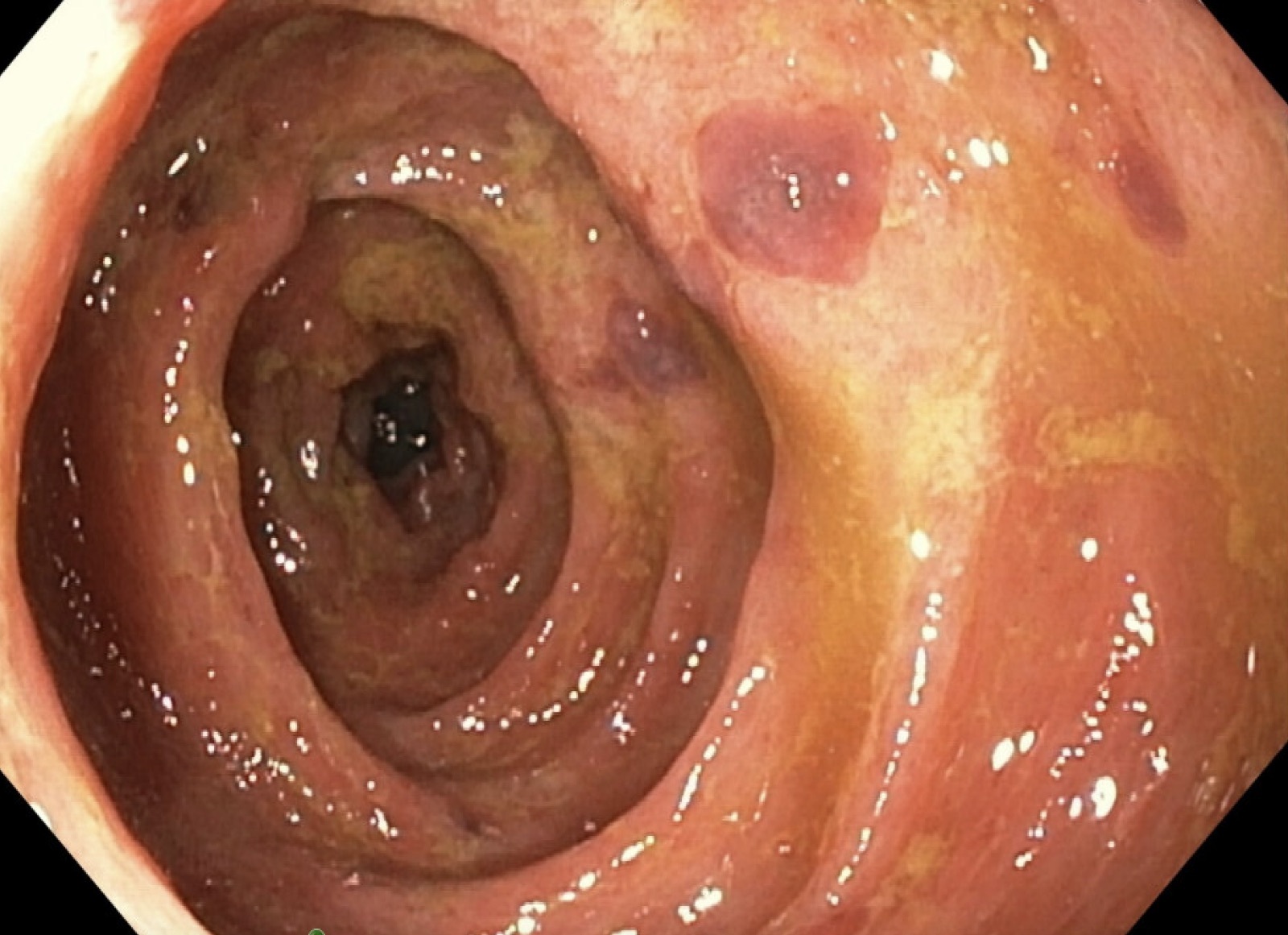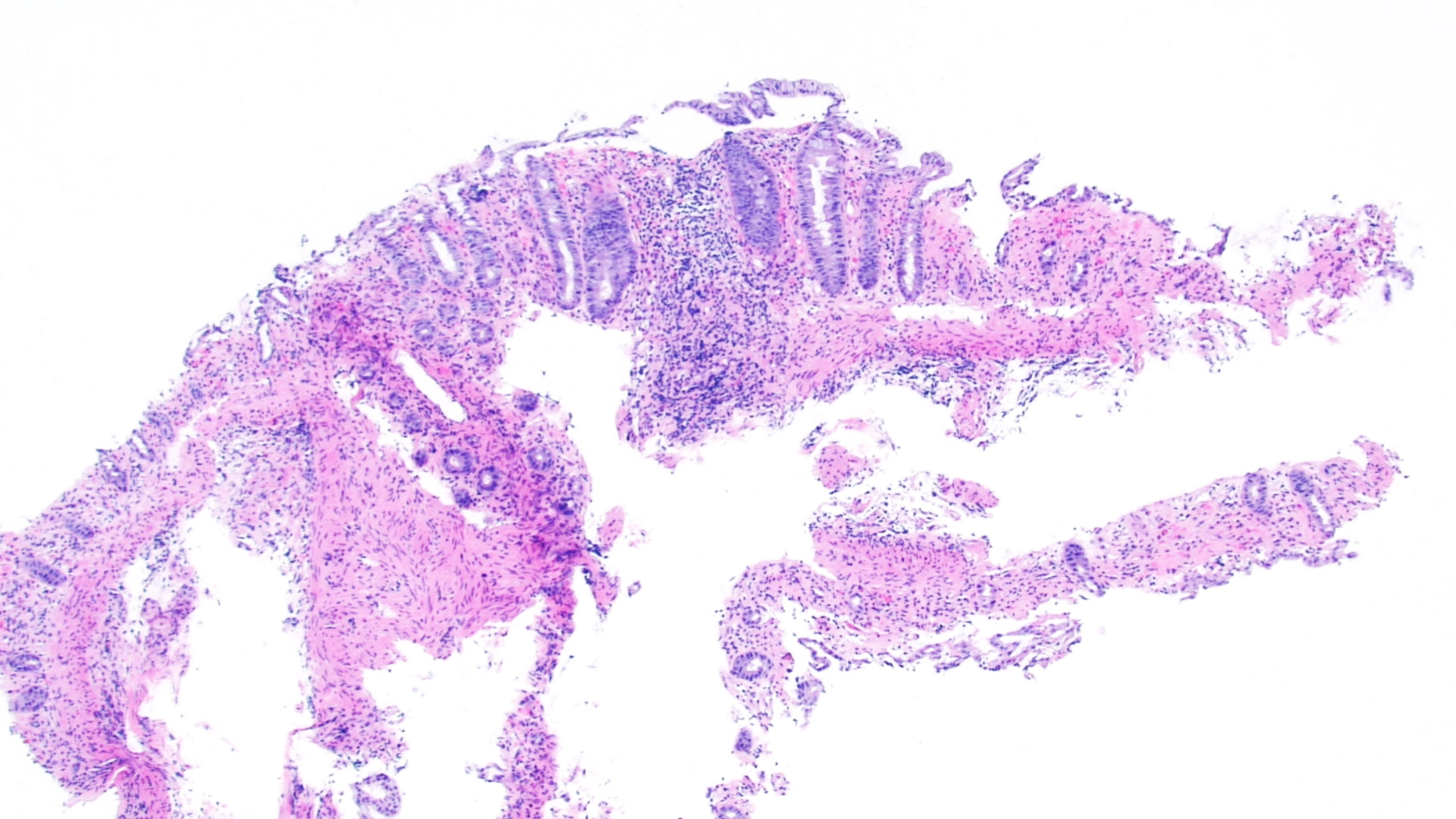Sunday Poster Session
Category: Colon
P0456 - Weight Loss Medications: When Your Colon Can’t Handle the Pain

Reem Al Shabeeb, MD (she/her/hers)
Carilion Clinic
Roanoke, VA
Presenting Author(s)
1Carilion Clinic, Roanoke, VA; 2Wilford Hall Ambulatory Surgery Center, Lackland Air Force Base, TX
Introduction:
Glucagon-like peptide-1 (GLP-1) receptor agonists are increasingly used for the management of obesity. While generally well-tolerated, there have been rare reports of GLP-1 receptor agonists associated with ischemic colitis. To the best of our knowledge, there is not enough data as of yet to help identify at risk patients and catch early warning signs of ischemia. We present a case of suspected ischemic colitis associated with tirzepatide use.
Case Description/
Methods:
A 54-year-old female with history of obesity (on weekly tirzepatide) presented to the hospital for acute-onset hematochezia and lower abdominal pain that did not improve with bowel movements. Symptoms were associated with intermittent diarrhea and nausea. She denied non-steroidal anti-inflammatory drugs (NSAIDs), antiplatelet or anticoagulation use.
Vitals were unremarkable. Hgb=15.4 g/dL, WBC=12.5 K/uL, and PLT 371 K/uL. CT angiogram of the abdomen and pelvis with/without contrast showed colon wall thickening through the descending colon and splenic flexure, with stranding in adjacent peri-colonic fat, compatible with colitis. The celiac axis and mesenteric arteries were all patent without evidence of stenosis.
GI was consulted and the patient underwent a colonoscopy the next day, which revealed nonbleeding sigmoid diverticulosis, and severely ulcerated and easily friable mucosa with deep ulcers in the mid transverse to sigmoid colon (Figure 1). Biopsies from the right colon showed benign colonic mucosa. Biopsies from the transverse and left colon biopsies showed an ischemic-type pattern of injury (Figure 2). The hematochezia resolved and the patient was discharged with instructions to down titrate tirzepatide if needed.
Discussion:
Our patient did not present with any risk factors for ischemia, including infection, hypovolemia, NSAIDs use, or other drug injury. Ischemic injury was thought to be associated with tirzepatide use. It is worth highlighting, that in this patient, the severity of endoscopic disease did not correlate with the clinical presentation and she had no symptoms in the first year on tirzepatide, posing a clinical dilemma for providers prescribing these medications to their patients.
Although limited data are available to indicate true causation versus association, it is thought that the gastrointestinal adverse effects of GLP-1 receptor agonists can contribute to the development of colonic ischemia by inducing constipation and volume depletion, resulting in systemic hypotension and subsequent ischemic colitis. 
Figure: Figure 1: Severely ulcerated and easily friable mucosa with deep ulcers in sigmoid colon.
Figure: Figure 2: Colonic mucosa biopsy with superficial predominant pattern of injury including surface erosion/ulceration, epithelial atrophy, and eosinophilic homogenization of the lamina propria; consistent with an ischemic-type pattern of injury.
Disclosures:
Reem Al Shabeeb indicated no relevant financial relationships.
David LeBel indicated no relevant financial relationships.
Douglas Grider indicated no relevant financial relationships.
Bara El Kurdi indicated no relevant financial relationships.
Cassandra Craig indicated no relevant financial relationships.
Reem Al Shabeeb, MD1, David LeBel, MD1, Douglas Grider, MD1, Bara El Kurdi, MD1, Cassandra Craig, MD2. P0456 - Weight Loss Medications: When Your Colon Can’t Handle the Pain, ACG 2025 Annual Scientific Meeting Abstracts. Phoenix, AZ: American College of Gastroenterology.
